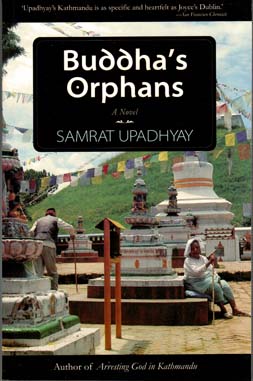Resources related to Buddha's Orphans
One of the great benefits of reading and teaching literature comes with the opportunities to travel the world and meet people of diverse customs and traditions. Along with this journey, or pilgrimage, if you will, I have the ongoing pleasure of making connections with people I know and with other works of literature previously read. The déjà vu moment or the “ah hah” realization are all part of the joys of reading. I also inform my students that reading literature deepens our experience of people and place. Besides the uniqueness of a particular culture, reading connects us to others in our basic humanity - our love and hate, our desires, our spiritual quests, our need to belong, our feeling of isolation and belonging to name a few. It is these “universal” qualities of being a human being which makes reading a reminder of who we are, and where others and ourselves have traveled, intellectually, physically, emotionally, and spiritually.
 
The resources presented here provide a few opportunities to make connections and to use Samrat Upadhyay’s Buddha’s Orphan’s and the short story “During the Festival.” Some activities may be used in conjunction with other works of literature. Besides my new found interest in Samrat Upadhyay’s writing I present a couple examples based on what I have used in the past.
I. Using the novel:
A. Create a glossary of Buddha’s Orphans. See “Creating Glossary.” Creating Glossary
B. Show the powerpoint “Buddhist Pilgrimage in the Himalayas” by Professor Todd
Lewis who teaches at the College of the Holy Cross in Worcester, Massachusetts.
Professor Lewis along with Professor Leonard van der Kuijp of Harvard Univesity,
co-hosted a 2011 NEH Summer Institute on “Religions, Literatures, and Arts, of the
Himalayan Region” This powerpoint is an excellent overview of the nature of
religious pilgrimage. (An additional valuable source is the book Pilgrimage and
Faith: Buddhism, Christianity, and Islam edited by Virginia C. Raguin and Dina
Bangdel F. E. Peters. Serindia Publications, Chicago, 2010) The Summer Institute
became my primary source for new knowledge on the Himalayan area. Buddhist Pilgrimage
Based on the powerpoint and a reading of the novel present an assignment with the
question: How are Raja’s and Nilu’s journeys as presented in the novel like a
pilgrimage? Obviously this is more of a secular pilgrimage, but I suggest it is
a secular pilgrimage with Hindu and Buddhist overtones. A variation of this
assignment certainly could be made. See the list of “Some Insights or Themes in
the novel ” on the summary page for further ideas for essay questions.
C. Have students read the handout (before, during, or after reading the novel)
“Good Householder” on “The Good Lay Buddhist.” Based on the ideas and
expectations on the one page handout have students create a chart or make notes on
the two main characters Raja or Nilu (or another significant character). The key
question may be “Is a character a good lay Buddhist?”
D. Consult the attached evaluation of book options. There are seven options, ranging
from writing a book review to creating book club questions. Evaluation of book options
E. Read The Kite Runner by Khaled Hosseini as an independent read or in conjunction
with reading Buddha’s Orphan’s. Literature of Modern South Asia could be a
substantial unit of study. See The Kite Runner evaluation attachments
for possibilities. It could also be a comparative book essay assignment as noted
in Evaluation of Book options
Kite Runner Chapter Titles
Kite Runner Film Analysis
Kite Runner Essay Questions
Kite Runner Insights
Kite Runner Glossary

II. Using any combination of one, two, or three short stories.
One great value of reading short stories is the advantage of spending less time in
reading and possibly more time probing into an understanding and an interpretation of
a literary work. Two stories I have had success in teaching include the
American writer Flannery O’Connor’s “Good Country People” and a Chinese story set
in WWII Shanghai “Sealed-Off” by Eileen Chang. Samrat Upadhyay’s “During the Festival”
or another of his stories, can
be compared to one or both of these stories. For evaluation
there
are many possibilities. See the attached sample unit on “Sealed-Off” for themes/insights
and other activities. I especially like (and my students are positive about this) having students
write a response to one sentence from a particular poignant page in a literary work. Short
stories work well for this and other exercises.
  
Buddhist Pilgrimage
Creating Glossary
Evaluation of book options
Good Country People
The Good Householder
Kite Runner Chapter Titles
Kite Runner Film Analysis
Kite Runner Essay Questions
Kite Runner Insights
Kite Runner Glossary
Sealed-Off Lesson
|







